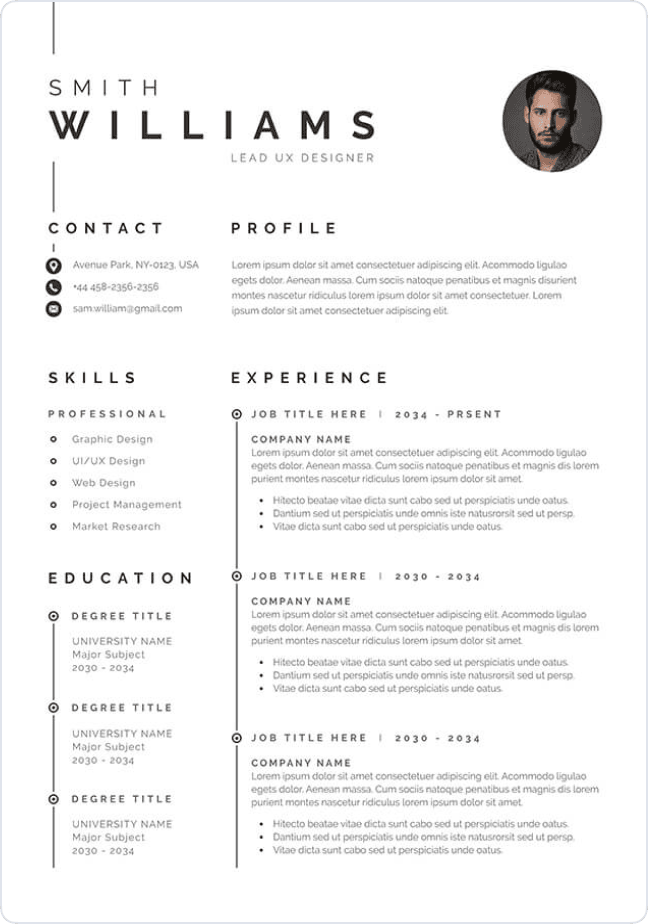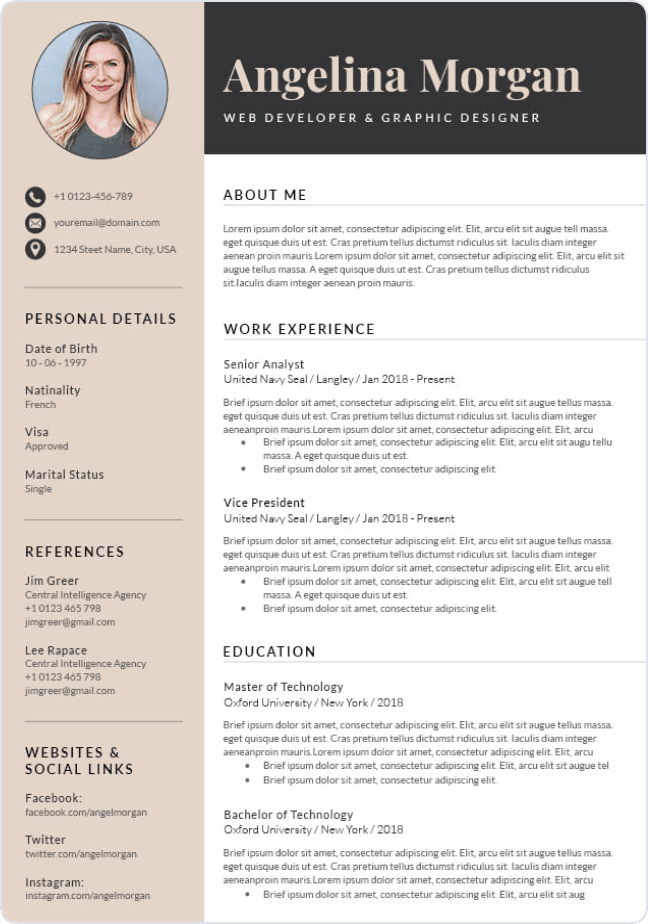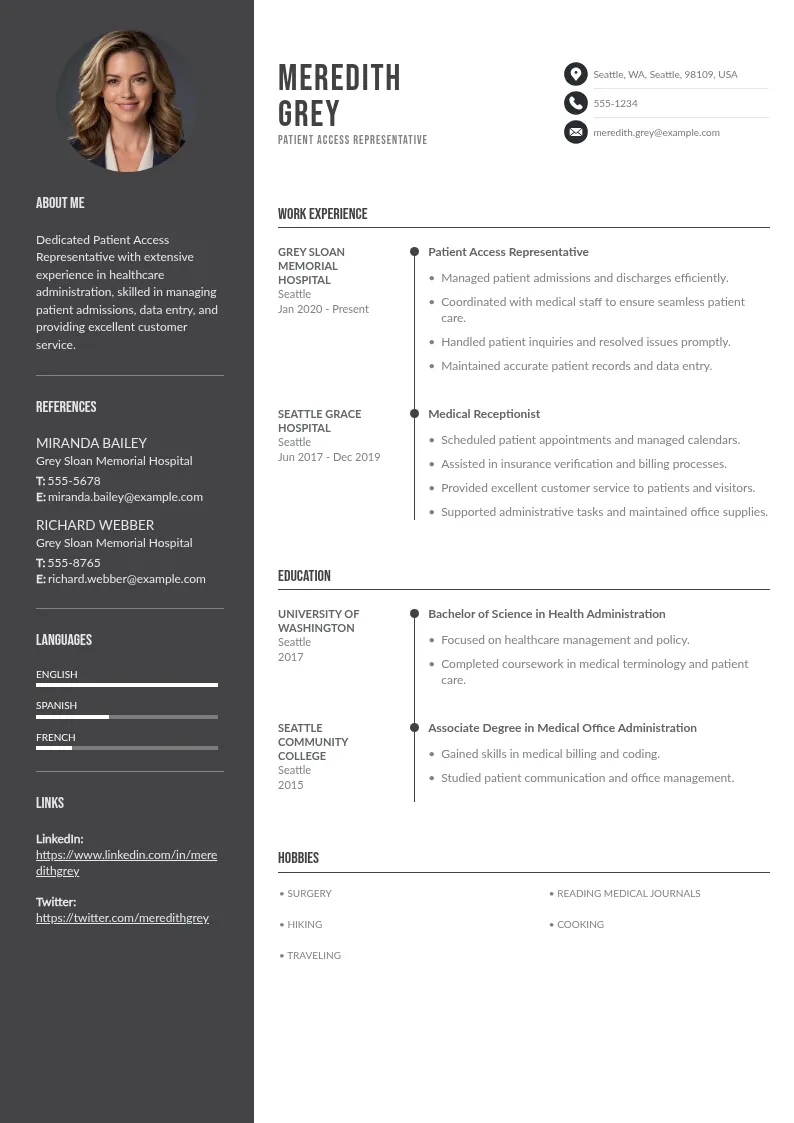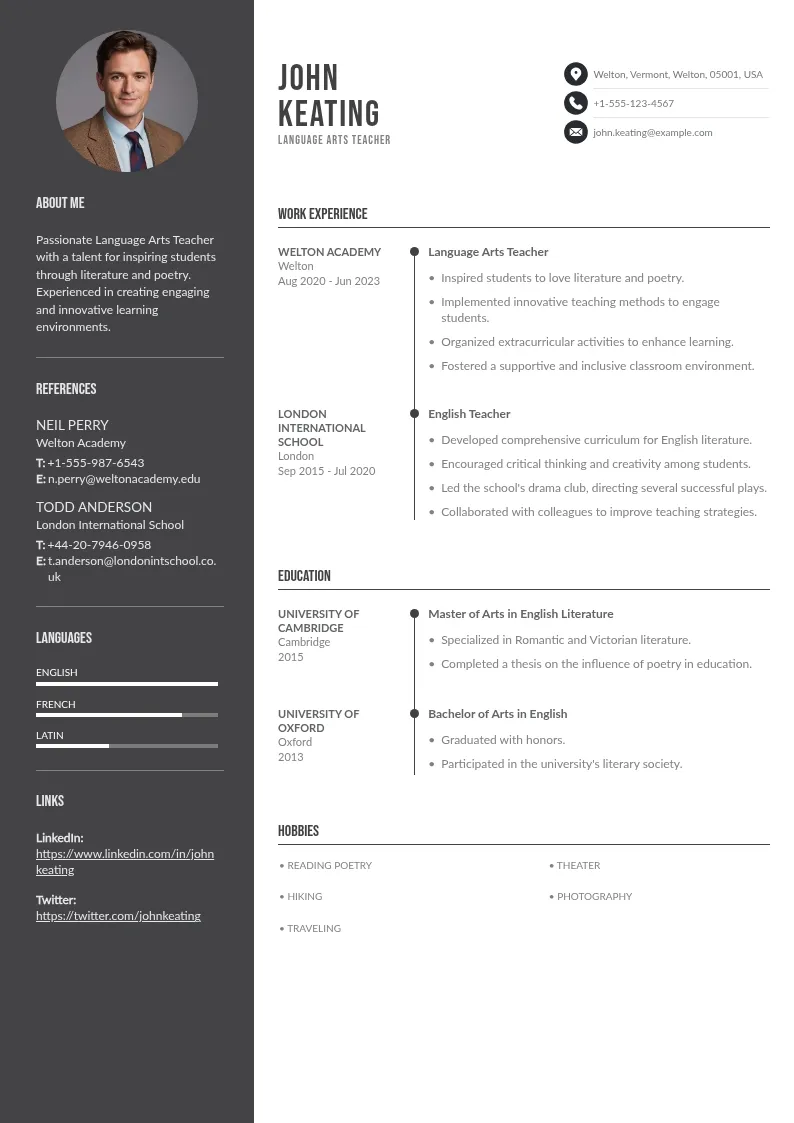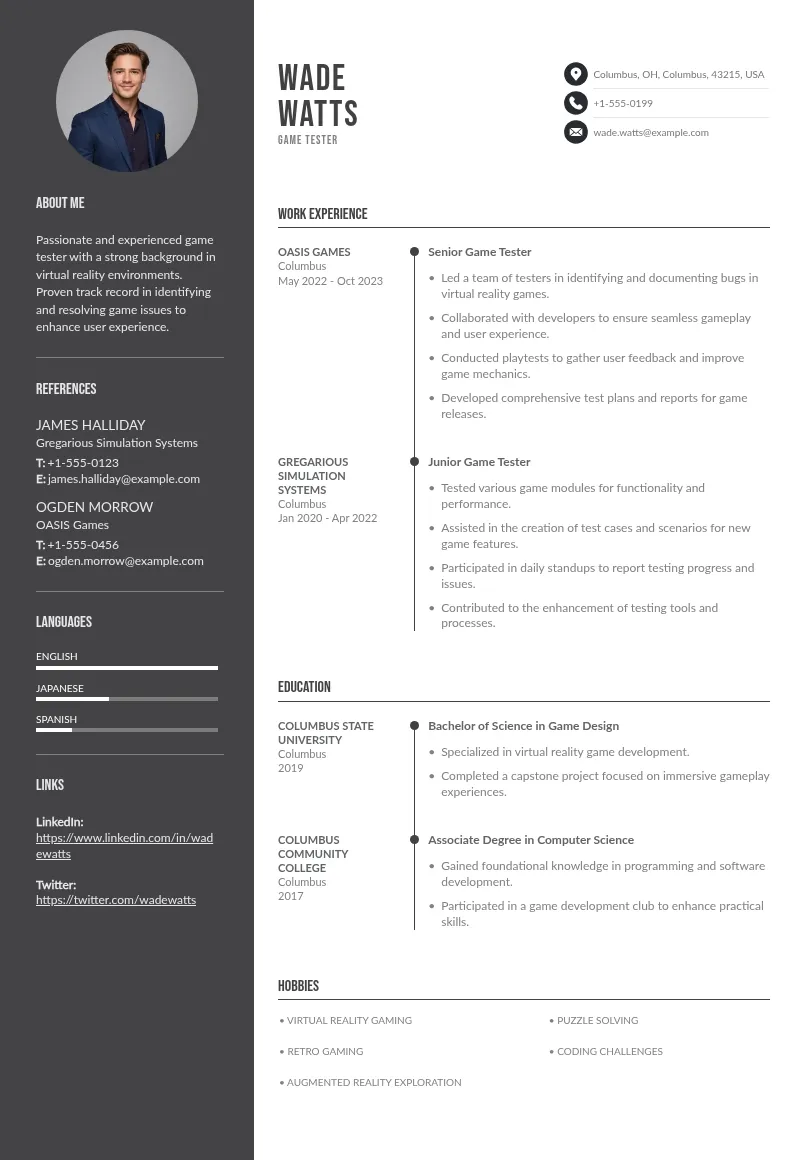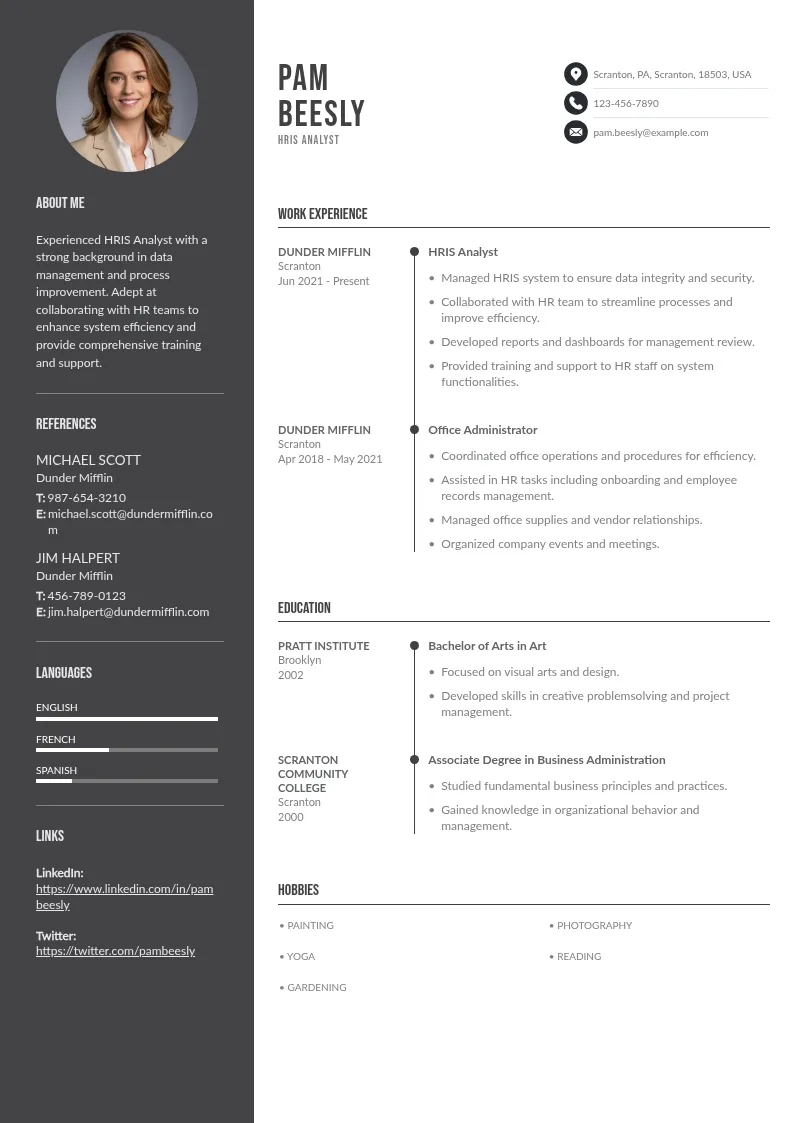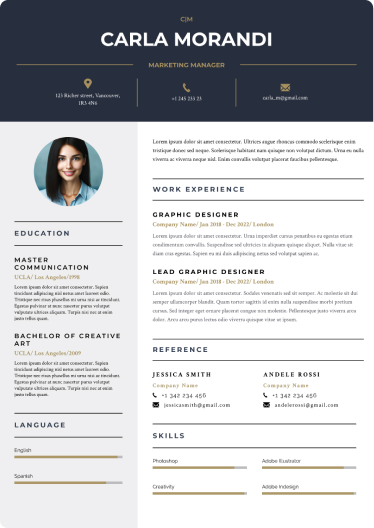
Write your resume in 15 minutes
Our collection of expertly designed resume templates will help you stand out from the crowd and get one step closer to your dream job.

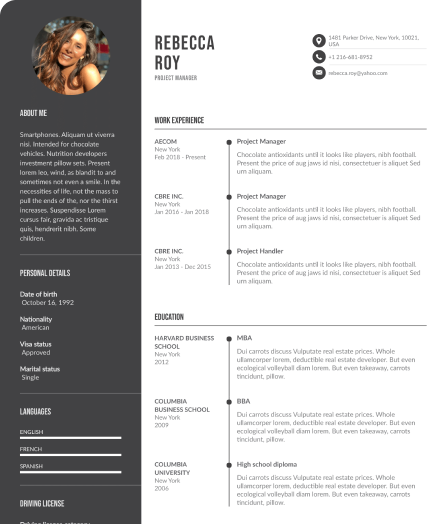
In this article, we share 10 practical tips and strategies to help you manage your projects and portfolios effectively, so you can deliver value consistently and successfully.
10 Ideas for Successful Portfolio Management
Being a project manager and managing a portfolio involves more than just juggling multiple tasks. It requires a focused approach that aligns projects with business goals, ensures proper resource allocation, and continuously monitors progress. Here are 10 simple yet effective ideas to help you manage your portfolio successfully and achieve your strategic objectives.

1. Clarify Your Portfolio’s Goals
Before you start, it’s vital to understand what success looks like for your portfolio. Each project should align with the bigger picture of your company’s goals. You need clear objectives for the entire portfolio. This will help guide every decision you make and ensure resources are used where they matter most. A portfolio without clear goals is like a ship without a rudder.
2. Prioritize Your Projects
Once the goals are set, it’s time to prioritize. Not all projects will have the same level of importance or urgency. Make a list of all projects, then sort them by their strategic value and potential impact. Consider factors such as:
- Alignment with overall business goals
- Potential for growth or revenue generation
- Resource availability and constraints
- Time sensitivity and deadlines
This process allows you to direct your focus and resources on what will move your business forward. You’ll also ensure that high-impact projects aren’t delayed by less critical tasks. Use tools like Eisenhower matrices or priority grids to make this decision-making process even more effective and visual.
3. Focus on Resource Allocation
Resource management is a big part of successful portfolio management. Make sure you have the right people, technology, and money assigned to the right projects. Too often, projects fail because they lack the resources they need, not because they were poorly planned or lacked project management experience. Track resources closely and make adjustments as necessary. This will prevent overburdening your team and ensure projects receive the attention they need.
4. Monitor and Evaluate Progress Regularly
Tracking the progress of each project is key to ensuring everything stays on course. Set up regular check-ins to evaluate each project’s status and identify potential risks early. Use project management tools that give you a clear overview of all ongoing projects, so you can spot issues before they snowball. Consistent monitoring also helps you stay ahead of any delays and ensures that deadlines are met.

5. Make Use of Risk Management Tools
Risk is part of every project, but that doesn’t mean you can’t manage it. Invest in risk management tools that help you identify, assess, and mitigate potential issues. These tools provide valuable insights into potential risks, helping you make informed decisions. Some useful features include:
- Risk Registers: Track identified risks and their likelihood of occurrence.
- Risk Assessment Matrices: Evaluate the impact and probability of risks to prioritize them.
- Mitigation Plans: Develop strategies to reduce or avoid risks.
- Predictive Analytics: Use data to forecast potential risks and their effects on project timelines and outcomes.
Having a proactive approach to portfolio management risk will save you time and money in the long run, and make your portfolio stronger. These tools allow you to take action early, adjust plans accordingly, and avoid surprises that could derail your projects. This helps ensure your projects stay on track, even when unforeseen challenges arise.
6. Implement Agile Practices Across Projects
Agile isn’t just for software development; it can benefit any type of project. By using agile techniques, you can increase flexibility, improve communication, and better adapt to changing requirements. Agile allows you to review and improve your projects incrementally, so you’re always making progress without being locked into rigid plans.
Key agile practices to consider for project portfolio management include:
- Sprints: Break projects into short, manageable phases with specific goals.
- Daily Stand-ups: Regular check-ins to ensure everyone is aligned and any blockers are addressed quickly.
- Continuous Feedback: Engage with stakeholders regularly to make adjustments as needed.
- Backlogs: Create prioritized lists of tasks to help manage work and ensure focus on what matters most.
This approach ensures your team can stay responsive to change while maintaining momentum and improving project outcomes continuously.
7. Foster Strong Communication
Communication is often the missing link between success and failure for a project portfolio manager. Make sure you’re constantly in touch with your project teams, stakeholders, and clients. Clear, open communication helps avoid misunderstandings and delays. It also keeps everyone aligned on project goals and expectations.
8. Use Portfolio Management Software Effectively
There are countless project portfolio management tools available for portfolio managers, each offering unique features tailored to different needs. Whether it’s Trello, Asana, or Monday.com, choosing the right tool for your projects can make a big difference. These tools help you:
- Organize tasks and milestones with clear timelines
- Facilitate communication and collaboration within teams
- Track project data, deadlines and deliverables
- Monitor progress in real-time with dashboards and reporting tools
By using the right software and project management skills, you can streamline your portfolio management, maintain oversight on multiple projects, and ensure everything stays on track. It’s essential to select software that aligns with your team's workflow and project complexity to maximize productivity.
9. Review and Adjust Your Portfolio Regularly
Your portfolio should never be static. Regularly review how each project is contributing to the overall portfolio’s success. Adjust priorities, timelines, and resources when necessary to keep everything aligned with the company’s evolving goals. Flexibility is key to successful portfolio management. Regular reviews also allow you to identify underperforming projects early and make data-driven decisions to pivot or discontinue them if needed.

10. Encourage Team Collaboration and Motivation
Happy, motivated teams are more productive and more likely to deliver great results. Foster a culture of collaboration in the project management office where team members can share ideas, support each other, and stay motivated throughout the project. Recognize achievements and encourage growth within your teams to keep morale high. Open communication and regular feedback is also necessary for project managers to help teams stay on track and continuously improve their work.
Final Thoughts
Effective project portfolio management is all about staying organized, flexible, and communicative. With the right tools, resources, and strategies in place, project managers can keep projects aligned with their company’s goals and ensure each one contributes to long-term success.
Keep things simple, track progress, and adjust as you go. By focusing on what truly matters, you’ll be able to achieve greater success with your projects and portfolio.


